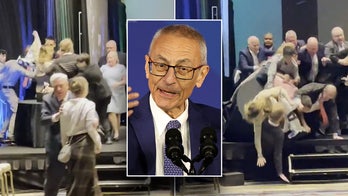The U.S. military has continued to drop ordnance on Muammar Qaddafi's air defense systems in Libya since the handover of operations to NATO on April 4, despite recent assurances from the Obama administration that the U.S. "strike" mission is over -- available only upon NATO's request -- and that the U.S. has moved entirely into a supporting role.
"We have fighter aircraft chopped to NATO, so not just aerial refueling, not just surveillance, that they can use for suppression of enemy air defense missions,” Pentagon Spokesman Col. Dave Lapan told reporters Wednesday. “And they have conducted some of those missions." Lapan added these missions are designed to "attack" those air defense systems.
This stands in contrast to messages heard in press briefings and testimony on Capitol Hill from defense leaders, who have given the impression that when the mission was handed over to NATO U.S. strike sorties stopped and were only available upon request.
On April 1, Defense Secretary Robert Gates testified to the House Armed Services committee that U.S. participation in the strike mission was coming to a close. "We will not be taking an active part in the strike activities, and we believe that our allies can sustain this for some period of time," Gates said.
And later that same day, neither Secretary Gates nor Admiral Mike Mullen took exception to Senator McCain's characterization of the U.S. role in Libya during a Senate hearing: "As the secretary's prepared statement makes clear, following the transfer of authority to NATO, the United States will only be playing a supporting role, namely intelligence, aerial refueling, search-and- rescue, and other enabling functions but not precision strike or other offensive operations," McCain said.
In fact, an 11 U.S. fighter jets have been offered to NATO since the handover on April 4, and they can be used for strike missions without U.S. approval. Col. Lapan stressed these missions only involve hitting air defenses and do not include the mission to protect civilians (i.e. bombing Qaddafi tanks, troops etc).
This is also significant because French and British leaders have complained in recent days that the U.S. is not doing enough to help the Libya mission. It turns out the U.S. has been helping with these strike missions.
Later Wednesday Col. Dave Lapan sent an e-mail to reporters clarifying his comments about the nature of the U.S. air mission. He said 11 U.S. fighters (6 F-16s and 5 EZ-18s) have flown Suppression of Enemy Air Defenses (SEAD) missions since the NATO handover on April 4th, and that the Defense Department does not characterize those as "strikes" because they are defensive in nature. "SEAD is considered a defensive, vice offensive, mission," Lapan wrote. He added that ordinance was fired by those aircraft on three occasions.




